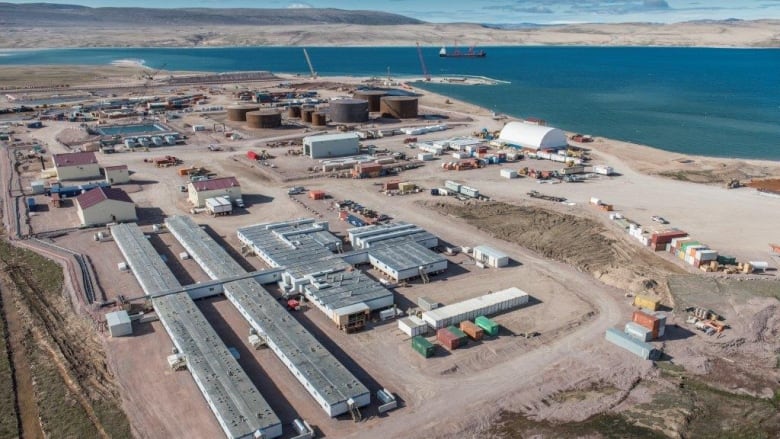Baffinland not meeting Inuit employment goals at Mary River: QIA
The Qikiqtani Inuit Association says Baffinland has shown 'a general lack of effort' in implementing the IIBA

The Qikiqtani Inuit Association says Baffinland is falling behind inemployment and training goals outlined in the Inuit Impact and Benefit Agreement for the Mary River Project.
The regional organization has released its first three-year review of the agreement, arguing that Inuit have lost out on what wasowed to them includingcontracts, jobs, training and social programs.
"The lost benefits have been substantial," the report reads, arguing that "ageneral lack of effort by Baffinland" is partly to blame.
But the Inuit organizationacknowledges its own failures.
"QIA underestimated the complexity of IIBA implementation and the degree to which the organization would be expected to lead it."
The seven-page report goes on tooutlinehowthe Qikiqtani Inuit Association believes Inuit are losing out and what the two groups need to do to fully implement their original agreement.
Baffinland 'not reaching targets'
One of the main criticisms in the reportis that Baffinland has fallen behind in its goals for hiring Inuit.
In the 2013 agreement, Baffinland and QIA set a "Minimum Inuit Employment Goal" forthe purpose of guaranteeing Inuit are given preference through the company's hiring process.

Not only has Inuit employment not reached that goal, it's been "steadily decreasing"each year since the agreement was signed.
"We're not reaching our targets in employment. There's no question about that," said Todd Berlingame, Baffinland's vice-president of sustainable development, in an interview with CBC.
Berlingamealso said he can'tpredict when thegoal might be reached.
"It's really hard to put a number on it. These are targets, right?They're not fixed thresholds that are hammered into stone. I mean we've got to be able to see some improvement," said Berlingame.
"The trend is going in the wrong direction right now and we need to start by reversing that trend."
'Room for improvement'
Berlingame says there are"a variety of reasons" why Baffinland has notreachedits Inuit employment goal, butacknowledges there is a lotof "room for improvement" when it comes to training.
"It's a very challenging situation," said Berlingame."Not everyone wants to work on a rotation. Not everyone wants to work on a mine."
One possible solution the company is exploring is allowing for flexibility in employee shifts around significant hunting times in nearby communities, he said.
"This is not something that Baffinland has ignored. Nor QIA for that matter. It's recognized as an issue."
QIA's review pinpointed another issue with training at Baffinland, writingthat "almost none of the $2 million guaranteed for Inuit education and training has been spent by Baffinland."
"Virtually all of the training provided to Inuit has been delivered as part of normal operations and cannot be attributed to the IIBA," the reviewstated.
Baffinland says 'financial times' are tough
But Berlingamesays one of the main reasons why Baffinland has not yet reached its employment targets is because the price of iron ore has dropped so dramatically since the agreement was drafted.
"The world has changed significantly since the agreement was signed," said Berlingame."It's been a struggle."
When the Inuit Impact and Benefit Agreement was being negotiated, Baffinlandput forward a production scenario of 18-milliontonnes of iron oreper year, based on a price of $140US per tonne, he said.
With the current market price for iron ore ishoveringaround$60US per tonne,Baffinlandis producinga fraction of its previous goal:3-million tonnesper year.
"We need to reach a threshold of production to be a sustainable operation," he said."At 3-million-tonnes a year, this operation does not make money."
QIA/Baffinlandrelationship 'a bit testy'
That financial reality has made the relationship between QIA and Baffinland "a bit testy," said Berlingame a statement few would argue given that QIA has saidthe mining company owes it millions in advance royalty payments.
Berlingamesays Baffinland is ready to work with QIA to find solutions to the challenges it faces in finding, training and retaining Inuit staff.
"We're going to work through this. I'm confident of that," he said.
"To be very frank, we're really looking forward to rebuilding or building a trust relationship with QIA. We would not want to move into an area of the relationship where it's confrontational."
The Qikiqtani Inuit Association put forward a number of next steps for the implementation of the agreement, including creating strategies to promote, monitor and evaluate Inuit employment.
The group wrote that it has not ruled out the possibility of negotiating a change to certain provisions in the Inuit Impact and Benefit Agreement, if the priorities it has setout in the review are not met.












_(720p).jpg)


 OFFICIAL HD MUSIC VIDEO.jpg)
.jpg)



























































































